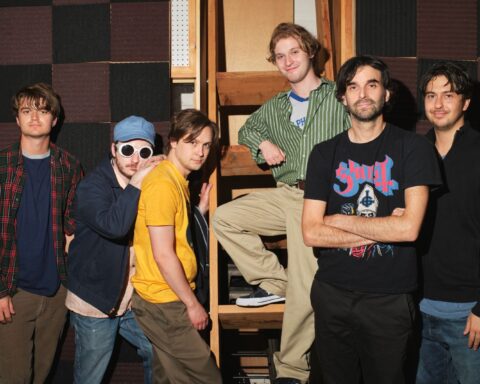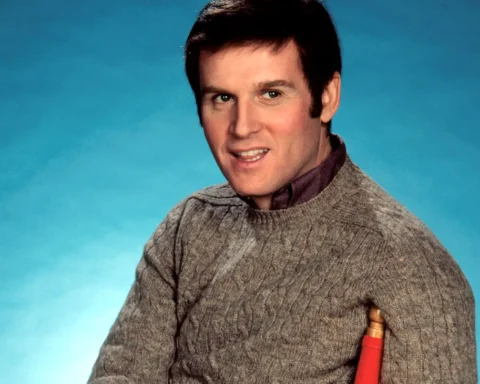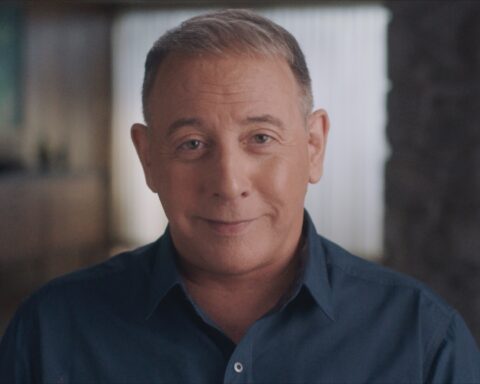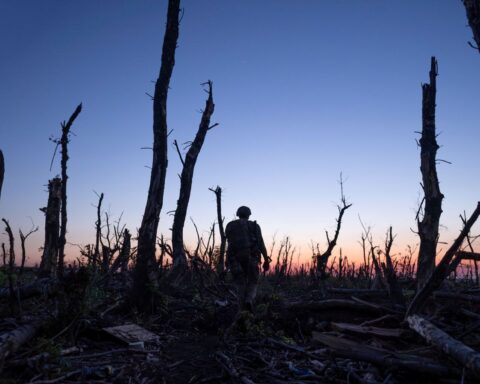Since the mid-’60s, Thom Andersen has made only a handful of films, yet all are nonfiction trailblazers. As a filmmaker, he is perhaps best known for his 2003, 169-minute epic essay film, Los Angeles Plays Itself. It’s hypnotic, informative, captivating, a location-based exploration of the city’s film history divided into three sections: “The City as Background,” “The City as Character” and “The City as Subject.” Andersen is also a film critic and historian. He teaches film theory and history at the California Institute of the Arts.
CC: Christina Clarke | TA: Thom Andersen
CC: The definition of documentary seems to be changing. What’s your take on hybrid nonfiction?
TA: For me it represents a return to something that really has existed since the beginning of documentary as we call it: Nanook of the North or a film I actually like better, In the Land of the Headhunters by Edward Curtis, made about 1914. [Shot] north of Vancouver, it’s a document of the native people there and their ceremonies. It’s so impressive; footage of it turns up in a lot of films. For example, it’s in Oliver Stone’s (1991 movie, The Doors, in which he re-creates Jim Morrison’s student film,) the one he made at UCLA and was lost. It has footage from (Headhunters), which wouldn’t be possible because the movie hadn’t been rediscovered yet.
My point is Curtis made up a story that the native people acted out. It was based on their life but was also sensationalized. So from the very beginning of what we think of as documentary was hybrid film.
CC: Films were a new way of seeing; it was a new technology. Sensationalizing stories would draw more of an audience. And certainly in the teens, orientalism was popular; people were fascinated by the exotic.
TA: Godard said Méliès was the father of documentary because he made The Coronation of Edward VII around 1902, which of course was staged. But it was the first film that proposed that it was documentation of an event rather than just a street scene as in the Lumière films.
CC: Given the historic roots of documentary, it’s ironic that it became more and more assumed to be non-partisan and reality-based.
TA: The Maysles don’t call their films documentaries; they call them fictions because they make a story out of something that’s real, which they don’t manipulate except when they are editing the film. Johan van der Keuken is one of the great documentary filmmakers. He doesn’t call his work documentary because he has people reenact things. It’s things that they do but he asks them to do them again so that he can film them, even if it’s just a matter of walking. And then of course the people who are part of this series: Jean Rouch, Robert Gardner and Pierre Perrault in Canada. Another important film is Portrait of Jason by Shirley Clarke.
CC: Where does documentary film end and narrative film or even art film begin? Artists like Bruce Conner come to mind and Mike Kelley, who was a graduate of Cal Arts. Robert Frank’s Cocksucker Blues, in which Frank invented his own version of the Rolling Stones. We’ve come to believe that documentary is more truthful than narrative film, that the story is more authentic under the rubric of documentary film.
TA: Pedro Costa, who could obviously be in this programme as well, when people ask him what was documentary, what they were really interested in was, what was true. For him, true was not a matter of what was staged or reenacted in his films but the truth. Let’s say documentary films have a certain kind of truth and fiction films have a certain kind of truth.
CC: How do you define each? Is there a line?
TA: Sure. In a fiction film, it’s a matter of having a kind of privileged access to the people in the film and creating a story that has some moral, an emotional truth, the possibility of a truth about society at a certain time and place. The last is also what we expect of documentary but we don’t expect the same kind of access to the people in a documentary film.
CC: Access to their internal workings? To their spiritual lives? Their motivation?
TA: That’s why [Krzysztof ] Kieslowski quit making documentaries and started making fiction films. He said in a documentary you couldn’t show people making love, you couldn’t show the most intimate scenes. He felt he had used up all he could do in documentary and started making fiction films. But his first fiction films were sort of hybrids. Short Working Day, for example, is quite a remarkable film, and the one after it Blind Chance.
CC: I’m thinking even Kenneth Anger could be included in this definition of nonfiction. Visual artists have always been playing around with this and it seems we’re finally acknowledging that filmmakers have been doing this all along. And some of the films coming out right now are very powerful because filmmakers are used to dealing with the through line of narrative. Visual artists seem to discover narrative later whereas filmmakers are looking for the narrative, for the inherent story, the inherent dramatic climax.
TA: Also, if there are more films like this being made today it’s because of the ossification of the documentary form in U.S. filmmaking. Certain forms have become formulas. Obviously, if you want to talk about hybrid films, reality TV is an example where you have something real and something made up. The Ken Burns form, Alex Gibney (Enron: The Smartest Guys in the Room). Films that tell a story but it’s a story that’s also sometimes interrupted. Neither of these forms was involved with direct cinema, which seems to have kind of disappeared from mainstream American documentaries since the ’60s and ’70s. Quite often the subject is political or quasi-political or pseudo-political, like the Enron movie or Charles Ferguson’s movie about the stock market crash (Inside Job) and his very good film about the Iraq war and occupation (No End in Sight: The American Occupation of Iraq). What these films have in common and what I don’t like about them is the use of extragenic music. I might have started that in American film with the Muybridge movie. Of course it had been done before in a number of French documentaries, most notably in Night and Fog, which has a great score by Hanns Eisler.
CC: Now that everyone is documenting everything online, where do you think personal narratives end and fictions begin? What’s your experience at Cal Arts with your students?
TA: James Benning (who was also featured in Art of the Real) teaches a class [at Cal Arts] where students make movies from material found on various Web sites like but not limited to YouTube. The availability of these images makes it possible to create different kinds of work, to create strange juxtapositions. The films that he is presenting in this series are some of his YouTube movies, made from materials he found on the Internet.
CC: Does that count as “found footage” since it’s identified as owned or created by those posting online?
TA: Maybe the term found footage is used too widely. For example: Los Angeles Plays Itself is not made from found footage.
CC: Highly curated footage!
TA: Some of it was found in a sense, but I searched for certain things. I saw a movie and said this is something I want to talk about.
CC: What sort of films did you respond to when growing up? What sparked your interest in the medium?
TA: As a child I didn’t go to the movies very much or even watch them on television. I remember a couple of movies I saw that I liked as a child: High Noon and another one that I still like is War of the Worlds. It scared me a lot, seeing it in a movie theatre. I got interested in movies when I was in high school. I suppose the movies that first inspired me were Ivan the Terrible and “The Apu Trilogy” by Satyajit Ray. After that, Breathless and Pickpocket and Last Year at Marienbad, those were the movies that inspired me to take an interest in working in film. Another Hollywood movie that impressed and scared me when I was young was Kiss Me Deadly. The only movies that I saw as a child that appear in Los Angeles Plays Itself were War of the Worlds and Kiss Me Deadly, both movies that I still like.
CC: I think as a kid, the things that are most memorable are the things that scare us. Being scared as a kid is kind of the same as being excited.
TA: Yeah. There are movies that scare you, like Errol Morris’s The Fog of War. Not so much the Rumsfeld movie.
CC: The Fog of War is quite chilling. It does what a good narrative film does; it has a great arc. The fact it’s based on real stuff makes it that much more terrifying.
TA: Scary movies today are documentaries.
CC: You have several films in Art of the Real, including Eadweard Muybridge: Zoopraxographer and Red Hollywood.
TA: Muybridge is in a way kind of a new movie. Finally, I can say, I’ve been able to do what I intended to do with these movies but, because of lack of resources, was unable to do. I’m sure [UCLA] spent more money on this restoration, which is more of a re-creation of Muybridge, than I spent on making it. It’s really wonderful. It’s now 35mm instead of 16mm.
It was restored by the UCLA Film and Television Archive: Ross Lipman and Sean Hewitt. In all their restorations, when they have a 16mm film they blow it up to 35. That’s what they did for Killer of Sheep by Charles Burnett and Bless Their Little Hearts by Billy Woodberry, two films that were in Los Angeles Plays Itself.
CC: Are you planning to do some other films?
TA: I’d like to make a movie about D.J. Waldie, who wrote Holy Land, a book about Lakewood, one of the best books about Southern California. I’d like to make a movie about architecture in Los Angeles, early modernist architecture. There are lots of other possibilities. I’d like to write a book that is an extension of Los Angeles Plays Itself. People have talked about a book of collected writings or selected writings—things that I’ve written that weren’t published or things that were published under other people’s names. And I’d also like to see the longer films that I’ve made get wider distribution so that everyone who might be interested can see them.
CC: Is there anyone you’ve especially admired?
TA: I was a big fan of the Maysles, particularly their film about the Beatles in 1964. I thought when I got out of film school, I could get a job with them as an editor. But I think all their editors were women, so I knew I didn’t stand much of a chance.










